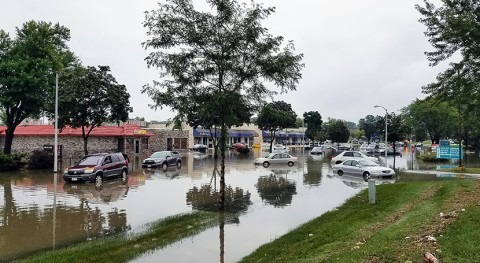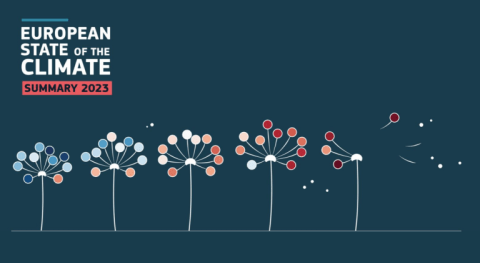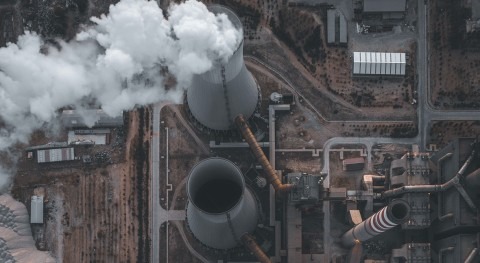The WMO provisional State of the Global Climate report confirms that 2023 is set to be the warmest year on record. Data until the end of October shows that the year was about 1.40 degrees Celsius (with a margin of uncertainty of ±0.12°C )above the pre-industrial 1850-1900 baseline. The difference between 2023 and 2016 and 2020 - which were previously ranked as the warmest years - is such that the final two months are very unlikely to affect the ranking.
The past nine years, 2015 to 2023, were the warmest on record. The warming El Niño event, which emerged during the Northern Hemisphere spring of 2023 and developed rapidly during summer, is likely to further fuel the heat in 2024 because El Niño typically has the greatest impact on global temperatures after it peaks.

“Greenhouse gas levels are record high. Global temperatures are record high. Sea level rise is record high. Antarctic sea ice is record low. It’s a deafening cacophony of broken records,” said WMO Secretary-General Prof. Petteri Taalas.
“These are more than just statistics. We risk losing the race to save our glaciers and to rein in sea level rise. We cannot return to the climate of the 20th century, but we must act now to limit the risks of an increasingly inhospitable climate in this and the coming centuries,” he said.
“Extreme weather is destroying lives and livelihoods on a daily basis – underlining the imperative need to ensure that everyone is protected by early warning services,” said Prof. Taalas.
Carbon dioxide levels are 50 % higher than the pre-industrial era, trapping heat in the atmosphere. The long lifetime of CO2 means that temperatures will continue to rise for many years to come.
The rate of sea level rise from 2013-2022 is more than twice the rate of the first decade of the satellite record (1993-2002) because of continued ocean warming and melting of glaciers and ice sheets.
The maximum Antarctic sea-ice extent for the year was the lowest on record, a full 1 million km2 (more than the size of France and Germany combined) less than the previous record low, at the end of southern hemisphere winter. Glaciers in North America and Europe once again suffered an extreme melt season. Swiss glaciers have lost about 10 percent of their remaining volume in the past two years, according to the WMO report.
The report shows the global reach of climate change. It provides a snapshot of socio-economic impacts, including on food security and population displacement.
“This year we have seen communities around the world pounded by fires, floods and searing temperatures. Record global heat should send shivers down the spines of world leaders,” said United Nations Secretary-General António Guterres.
In a video message accompanying WMO’s climate report, Mr Guterres urges leaders to commit to urgent action at the UN Climate Change negotiations, COP28. There is still hope, he said.
“We have the roadmap to limit the rise in global temperature to 1.5 °C and avoid the worst of climate chaos. But we need leaders to fire the starting gun at COP28 on a race to keep the 1.5 degree limit alive: By setting clear expectations for the next round of climate action plans and committing to the partnerships and finance to make them possible; By committing to triple renewables and double energy efficiency; And committing to phase out fossil fuels, with a clear time frame aligned to the 1.5-degree limit,” he said.
Renewable energy capacity grew nearly 10% in 2022, led by solar and wind power.
The WMO provisional State of the Global Climate report was published to inform negotiations at COP28 in Dubai. It combines input from National Meteorological and Hydrological Services, regional climate centres, UN partners and leading climate scientists. The temperature figures are a consolidation of six leading international datasets.
The final State of the Global Climate 2023 report, along with regional reports, will be published in the first half of 2024.

Extreme weather and climate events
Extreme weather and climate events had major impacts on all inhabited continents. These included major floods, tropical cyclones, extreme heat and drought, and associated wildfires.
Flooding associated with extreme rainfall from Mediterranean Cyclone Daniel affected Greece, Bulgaria, Türkiye, and Libya with particularly heavy loss of life in Libya in September.
Tropical Cyclone Freddy in February and March was one of the world’s longest-lived tropical cyclones with major impacts on Madagascar, Mozambique and Malawi. Tropical Cyclone Mocha, in May, was one of the most intense cyclones ever observed in the Bay of Bengal.
Extreme heat affected many parts of the world. Some of the most significant were in southern Europe and North Africa, especially in the second half of July where severe and exceptionally persistent heat occurred. Temperatures in Italy reached 48.2 °C, and record-high temperatures were reported in Tunis (Tunisia) 49.0 °C, Agadir (Morocco) 50.4 °C and Algiers (Algeria) 49.2 °C.
Canada’s wildfire season was well beyond any previously recorded. The total area burned nationally as of 15 October was 18.5 million hectares, more than six times the 10-year average (2013–2022). The fires also led to severe smoke pollution, particularly in the heavily populated areas of eastern Canada and the north-eastern United States. The deadliest single wildfire of the year was in Hawaii, with at least 99 deaths reported – the deadliest wildfire in the USA for more than 100 years.
Five consecutive seasons of drought in the Greater Horn of Africa was followed by floods, triggering even more displacements. The drought reduced the capacity of the soil to absorb water, which increased flood risk when the Gu rains arrived in April and May
Long-term drought intensified in many parts of Central America and South America. In northern Argentina and Uruguay, rainfall from January to August was 20 to 50% below average, leading to crop losses and low water storage levels.
Socio-economic impacts
Weather and climate hazards exacerbated challenges with food security, population displacements and impacts on vulnerable populations. They continued to trigger new, prolonged, and secondary displacement and increased the vulnerability of many who were already uprooted by complex multi-causal situations of conflict and violence.
One of the essential components for reducing the impact of disasters is to have effective multi-hazard early warning systems. The international Early Warnings for All initiative seeks to ensure that everyone is protected by early warning systems by the end of 2027. Development and implementation of local disaster risk reduction strategies have increased since the adoption of the Sendai Framework for Disaster Risk Reduction.

















